
Mr. Green says...
Welcome to the latest installment of Efficiency Watch. This issue starts with a look at the U.S. Department of Energy’s (DOE) proposed uninterruptible power supply efficiency standard. We’ll then move on to explore California’s new standard covering computers, monitors, and signage displays, proposed revisions to the U.S. ENERGY STAR television and computer server efficiency program specs, and the 2017 ENERGY STAR Most Efficient program requirements. The issue wraps up with a status update on the European Commission’s (EC) Ecodesign Directive product lots along with late-breaking efficiency news. As always, if you have any questions or comments, or would like me to report on a specific regulation, please feel free to email me.
In this issue
- U.S. DOE Proposes UPS Efficiency Standard
- California Computers to Become More Efficient in 2019
- ENERGY STAR Starts Television Spec Version 8 Development
- U.S. EPA Begins Revising Computer Server Program Spec
- Most Efficient Program Specs Finalized
- New Smart Lamp Efficiency Report Available
- Ecodesign Directive Update
- Late Breaking News
DOE Proposes UPS Efficiency Standard
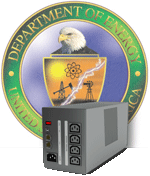 The U.S. Department of Energy (DOE) has published a Notice of Proposed Rulemaking (NOPR) describing minimum efficiency levels for uninterruptible power supplies (UPSs). The proposal is an offshoot of the DOE’s battery charger efficiency standard. The UPS standard is expected to save consumers as much as $4.4 billion in energy savings for products purchased between 2019 and 2048.
The U.S. Department of Energy (DOE) has published a Notice of Proposed Rulemaking (NOPR) describing minimum efficiency levels for uninterruptible power supplies (UPSs). The proposal is an offshoot of the DOE’s battery charger efficiency standard. The UPS standard is expected to save consumers as much as $4.4 billion in energy savings for products purchased between 2019 and 2048.
If adopted, the efficiency requirements would apply to the UPS product classes listed in in the table below. The standard will affect UPS products manufactured in, or imported into, the United States, starting two years after publication in the Federal Register.
The proposed requirements are expressed in average load-adjusted efficiency and are based on a UPS’s rated output power (Prated) as shown below.
Table 1. Proposed energy conservation standards for UPS systems
| UPS Product Class | Rated Output Power | Minimum Efficiency |
|---|---|---|
| Voltage and Frequency Dependent1 | 0 W < Prated ≤ 300 W 300 W < Prated ≤ 700 W Prated > 700 W |
-1.09E-06 × P2rated + 6.50E-04 × Prated + 0.876 -5.63E-08 × P2rated + 7.61E-05 × Prated + 0.955 -6.22E-09 × P2rated + 3.91E-06 × Prated + 0.981 |
| Voltage Independent2 | 0 W < Prated ≤ 300 W 300 W < Prated ≤ 700 W Prated > 700 W |
-6.45E-07 × P2rated + 3.80E-04 × Prated + 0.929 -3.94-08 × P2rated + 4.87E-05 × Prated + 0.974 -2.28E-09 × P2rated + 7.40E-07 × Prated + 0.990 |
| Voltage and Frequency Independent3 | 0 W < Prated ≤ 300 W 300 W < Prated ≤ 700 W Prated > 700 W |
-3.13E-06 × P2rated + 1.96E-03 × Prated + 0.544 -2.60-07 × P2rated + 3.65E-04 × Prated + 0.765 -1.70E-08 × P2rated + 3.85E-05 × Prated + 0.877 |
1UPS that produces an AC output where the output voltage and frequency are dependent on the input voltage and frequency. 2UPS that produces an AC output that is independent of under- or over-voltage variations in the input voltage. 3UPS that produces an AC output voltage and frequency that is independent of input voltage and frequency variations, protecting the load from variations without depleting the internal battery.
To download a copy of the efficiency NOPR, click here. To download a copy of the test procedure NOPR, click here.
California Computers to Become More Efficient in 2019
 The California Energy Commission (CEC) has finalized the nation’s first mandatory efficiency standard for computers, monitors and signage displays. The Commission believes that consumers and businesses will save over $370 million in energy costs when using products that meet the efficiency requirements.
The California Energy Commission (CEC) has finalized the nation’s first mandatory efficiency standard for computers, monitors and signage displays. The Commission believes that consumers and businesses will save over $370 million in energy costs when using products that meet the efficiency requirements.
The CEC proposed initial requirements early in 2016 (California Continues Drive for Computer and Display Efficiency). After a good deal of discussion on the proposal with industry stakeholders, some specification and timing modifications were made. The resulting regulation language was published in September’s Efficiency Rulemaking Express Terms and expected to be approved by year end.
Computers
Covered in this regulation are desktops, notebooks (including mobile gaming systems), thin-clients, small-scale servers, and workstations. Excluded are tablets, smartphones, game consoles, handheld gaming devices, servers other than small-scale units, and industrial computers. The CEC believes that the core opportunity for computer energy savings is in limiting the unit's energy consumption during non-productive idle, standby, and off modes.
The regulation harmonizes with the ENERGY STAR Program Requirements for Computers version 6.1, adopting a Total Energy Consumption (TEC) approach. A computer's TEC is calculated using the following formula:
ETEC = (8760 ÷ 1000) × (POFF × TOFF + PSLEEP × TSLEEP + PLONG_IDLE × TLONG_IDLE + PSHORT_IDLE × TSHORT_IDLE)
Where: POFF = measured power consumption in off mode (W), PSLEEP = measured power consumption in sleep mode (W), PLONG_IDLE = measured power consumption in long idle mode (W), PSHORT_IDLE = measured power consumption in short idle mode (W), and TOFF, TSLEEP, TLONG_IDLE, and TSHORT_IDLE are mode weightings as specified in ENERGY STAR Program Requirements for Computers version 6.1, Table 3.
A computer’s maximum allowable annual energy consumption (per table 3) is determined partly by its expandability score (ES). ES is used to correlate the power supply sizing necessary for a computer to provide the required power to the core system plus any potential expansions through internal or external ports. ES is calculated by summing the products of each port score (per table 2) multiplied by the number of offered ports in the system (when sold) and then adding 100 to the resulting score.
Table 2. Computer standard ES port scores
| Port Type | Port Score |
|---|---|
| USB 2.0 or less | 5 |
| USB 3.0 | 10 |
| USB C | 15 |
| USB-PD | 100 |
| PCI slot other than PCIe x16 | 25 |
| PCIe x16 or higher | 75 |
| Thunderbolt 2.0 or less | 20 |
| Thunderbolt 3.0 or greater | 100 |
| M.2 | 10 |
| IDE, SATA | 15 |
Table 3. Computer energy consumption limits
| Computer type | Annual Energy Consumption (Max) (eff. 1/1/2019) |
Annual Energy Consumption (Max) (eff. 7/1/2021) |
|---|---|---|
| Desktops, mobile gaming systems, and thin clients | ||
| With ES ≤ 250 | 50 kWh/yr + applicable adders | 50 kWh/yr + applicable adders |
| With 250 < ES ≤ 425 | 80 kWh/yr + applicable adders | 60 kWh/yr + applicable adders |
| With 425 < ES ≤ 690 | 100 kWh/yr + applicable adders | 75 kWh/yr + applicable adders |
| With ES > 690 | None, must meet workstation requirements | None, must meet workstation requirements |
| Notebook and portable all-in-ones | ||
| All | 30 kWh/yr + applicable adders | 30 kWh/yr + applicable adders |
| Power supply minimum Power Factor (measured at full load) | ||
| (Excludes EPSs) | 0.9 PF | 0.9 PF |
A partial listing of the applicable energy adders are shown in table 4.
Table 4. Partial listing of computer applicable adders
| Function | Desktop, Thin-Client, Mobile Gaming System Adder (kWh/yr) |
Notebook Adder (kWh/yr) |
|---|---|---|
| System Memory | 4 + 0.15 × C (C = capacity in GB) |
4 + 0.15 × C (C = capacity in GB) |
| Energy Efficient Ethernet | 0.9 | 0.9 |
| Storage | 3.5 inch Drive: 26 2.5 inch Drive: 4.5 Solid State Memory: 0.5 Solid-State Hybrid Drive (SSHD):1.0 All Other: 26 per storage device |
2.6 per storage device |
| Integrated Display Where: d = diagonal measurement of the display (in), r = display’s megapixel resolution, A = viewable screen area (in2), EP=0 for displays that are not enhanced performance displays; Refer to Table V-8 in the CEC Express Terms for more info. |
For d ≤20: (8.76×0.35×(1+EP) × [(4.2×r)+5.7]) ×0.8; For 20<d<23: (8.76×0.35× (1+EP) × [(4.2×r)+(0.02×A)+2.2]) ×0.8 For 23≤d<25: (8.76×0.35×(1+EP) × [(4.2×r)+(0.04×A)-2.4]) ×0.8 For 25≤d: (8.76×0.35× (1+EP) × [(4.2×r)+(0.07×A)-10.2]) ×0.8 Resolutions greater than 6 megapixels shall use 6 for r. |
8.76×0.3× (1+EP) × [(0.43×r) +(0.0263×A)] Resolutions greater than 6 megapixels shall use 6 for r. |
Additionally, the computers must:
- Transition into sleep or off mode ≤ 30 minutes of user inactivity. Sleep mode power limits are described in greater detail in the Express Terms.
- Transition connected displays into sleep mode within 15 minutes of user. inactivity
Workstations
Workstations, including small scale servers and high expandability computers, must meet the following efficiency requirements, starting January 1, 2018:
- Be powered by an internal power supply meeting 80+ Gold efficiency as shown in table 5 below or an external power supply meeting DOE Level VI efficiency
- Incorporate Energy-Efficient Ethernet functionality
- Transition into sleep or off mode ≤ 30 minutes of user inactivity
- Transition connected displays into sleep mode within 15 minutes of user inactivity
Table 5. Power supply requirements for small-scale servers, high expandability computers, mobile workstations, and workstations
| 115V power supplies | ||||
|---|---|---|---|---|
| 10% load Eff. | 20% load Eff. | 50% load Eff. | 100% load Eff. | Power Factor Correction |
| - | 87% | 90% | 87% | 0.9 at 50% load |
| 230V power supplies | ||||
| 10% load Eff. | 20% load Eff. | 50% load Eff. | 100% load Eff. | Power Factor Correction |
| - | 88% | 92% | 88% | 0.9 at 50% load |
Computer Monitors
Computer monitors with a diagonal screen size between 17” and 61” are regulated using modal metrics, limiting power consumption in on-mode, sleep-mode, and off-mode. Allowable on-mode power is calculated based on monitor resolution, diagonal screen size and viewable screen area. The proposed limits for products manufactured after January 1, 2019 are shown in table 6. Monitors with touch screen capability are allowed an additional one watt in on-mode power. Monitors must consume less than or equal to 0.7 W and 0.5 W in sleep-mode and off-mode, respectively, or less than or equal to 1.2 W sleep- and off-mode combined.
Table 6. Power Consumption Standards for Computer Monitors
| Resolution | Diagonal Screen Size (in) | Monitor On-Mode Power Consumption (W) |
|---|---|---|
| ≤ 5 MP | 17” ≤ d ≤20 | [(6.0×r) + (0.025×A) + 3.7] ×applicable adder |
| 20” < d <23” | [(4.2×r) + (0.02×A) + 2.2] × applicable adder | |
| 23” ≤ d <25” | [(4.2×r) + (0.04×A) – 2.4] × applicable adder | |
| 25” ≤ d <30” | [(4.2×r) + (0.07×A) – 10.2] × applicable adder | |
| 30” ≤ d ≤61” | [(6.0×r) + (0.1×A) – 14.5] × applicable adder | |
| > 5.0 MP | 17” ≤ d ≤20” | [25 + (0.025×A) +3.7] × applicable adder |
| 20” < d <23” | [25 + (0.02×A) +2.2] × applicable adder | |
| 23” ≤ d <25” | [25 + (0.04×A) – 2.4] × applicable adder | |
| 25” ≤ d <30” | 25 + (0.07×A) – 10.2] × applicable adder | |
| 30” ≤ d ≤61” | [25 + (0.1×A) – 14.5] × applicable adder |
Notes: A = viewable screen area (in2), d = diagonal measurement of the display (in), r = megapixel resolution. Applicable adders can be found in Table V-5 in the Express Terms.
Commercial Signage
Commercial signage displays (excluding electronic billboards and digital picture frames) will follow the state’s current efficiency standard for televisions. The requirements are shown in table 7 below. The display must also automatically enter standby-passive or standby-active mode after no more than 15 minutes without video or audio input to the display.
Table 7. Power Consumption Standards for Signage Displays
| Screen Size Area (in2) |
On-mode Power (PON_MAX) (W) |
Standby-passive Mode Power (W) |
Minimum Power Factor (for P ≥ 100 W) |
|---|---|---|---|
| A < 1400 | (0.12×A) +25 | 1 | 0.9 |
For the complete proposed requirements, download a copy of the 2016 Appliance Efficiency Rulemaking, Express Terms for Computers, Computer Monitors, and Signage Displays here. For a copy of the 2016 Appliance Efficiency Rulemaking, Staff Report: Final Analysis, click here.
EPA Launches ENERGY STAR Television Spec Version 8 Development
In 2016, the U.S. EPA formally launched a process to revise its ENERGY STAR television program specification.
 The new version promises to be a little more complicated than previous ones due to recent energy savings features like Automatic Brightness Control (ABC) and other screen luminance dimming. Efforts to better understand the energy saving effects of these features have caused the EPA to consider changes in its current approach. A priority for version 8 will be to determine how to include their impact into the overall power consumption calculation. The issue is that the energy saving features need continuous operation over a wide range of viewing conditions to be effective while new TVs give consumers the option to choose modes that disengage them (and increase energy consumption).
The new version promises to be a little more complicated than previous ones due to recent energy savings features like Automatic Brightness Control (ABC) and other screen luminance dimming. Efforts to better understand the energy saving effects of these features have caused the EPA to consider changes in its current approach. A priority for version 8 will be to determine how to include their impact into the overall power consumption calculation. The issue is that the energy saving features need continuous operation over a wide range of viewing conditions to be effective while new TVs give consumers the option to choose modes that disengage them (and increase energy consumption).
The EPA is also interested in understanding the power consumption of High Dynamic Range (HDR) capable, ultra-high definition TVs when 1) translating standard dynamic range content and 2) playing native HDR10-encoded content.
As a first step, the EPA is taking television test data on currently available product. Manufacturers are also being asked to submit their own test data at [email protected]. The EPA continues to monitor the U.S. DOE progress on a federal television test method4 in order to integrate any changes into the current ENERGY STAR test specification.
For a copy of the version 8 launch letter, click here. For a copy of the October 2016 stakeholder webinar presentation, click here. To view the product development webpage, click here. To be added to the product development e-mail distribution list, send your contact information to [email protected].
4incorporated in Appendix H to Subpart B of 10 CFR Part 430
EPA Begins Revising Computer Server Program Spec
The U.S. EPA has begun drafting version 3 of its ENERGY STAR efficiency specification for computer servers. As with the current version, a server must meet all of the following criteria to be part of this program:
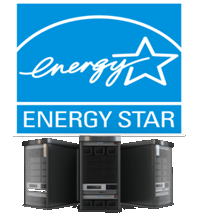 Marketed and sold as a computer server
Marketed and sold as a computer server- Packaged and sold with at least one AC-DC or DC-DC power supply
- Designed for and listed as supporting at least one or more computer server operating systems and/or hypervisors
- Targeted to run user-installed enterprise applications
- Provides support for ECC and/or buffered memory
- Designed so all processors have access to shared system memory and are visible to a single OS or hypervisor
The following products are excluded from the program: fully fault tolerant servers, server appliances, high performance computing systems, large servers, storage products including blade storage, and network equipment.
Major elements of draft 1 include:
- More stringent power supply efficiency 80+ Platinum efficiency levels are being proposed for power supplies shipped with the server, as shown in Table 8 below. Power Factor requirements stay the same as the current version.
Table 8. Minimum Power Supply Efficiency
| Power Supply Type | Rated Output Power | Minimum PSU Efficiency | |||
|---|---|---|---|---|---|
| 10% Load | 20% Load | 50% Load | 100% Load | ||
| Multi-output (AC-DC) | All output levels | N/A | 90% | 92% | 89% |
| Single-output (AC-DC) | All output levels | 83% | 90% | 94% | 91% |
- Idle state power requirement revision The EPA is proposing tighter idle state power limits for all one and two socket servers, including multi-node, blade and resilient5 categories. Measured idle state power must be less than the calculated maximum idle state power using the following equation:
![]()
Where PIDLE_MAX = maximum idle state power requirement, PBASE = base idle power allowance as specified in tables 9 and 10, and PADDL_i = idle state power allowance for additional components, as specified in table 11.
Table 9. Base idle state power allowance – one socket servers
| Category | Resilient | Base Idle State Power Allowance, PBASE (W) |
|---|---|---|
| A | No | 37 |
| B | Yes | 130 |
Table 10. Base idle state power allowance – two socket servers
| Category | Blade or Multi-node | Resilient | Base Idle State Power Allowance, PBASE (W) |
|---|---|---|---|
| C | No | No | 85 |
| D | Yes | No | 105 |
| E | No | Yes | 297 |
Table 11. Additional idle power allowances for extra components
| System Characteristic | Applies To: | Additional Idle Power Allowance (W) |
|---|---|---|
| Additional Power Supplies | Power supplies installed explicitly for power redundancy | 10 W per power supply |
| Storage Devices | Per installed storage device | 4 W per storage device |
| Additional Memory | Installed memory > 4GB | 0.25 W per GB |
| Additional Buffered DDR Channel | Installed buffered DDR, Channels > 8 (Resilient Server Only) | 4 W per buffered DDR channel |
| Additional I/O Devices | Installed devices > 2 ports of ≥ 1 Gbit, onboard Ethernet | <1 Gbit: No Allowance, = 1 Gbit: 2 W per active port, >1 Gbit and <10 Gbit: 4 W per active port, ≥10 Gbit.: 8 W per active port |
- The development of active state power metrics The EPA intends to include active state efficiency requirements in version 3. Discussions are on-going with stakeholders to develop potential active state efficiency requirements.
- Lower Auxiliary Processing Accelerator6 (APA) idle state power Version 3 requirement reduces the power to 30 W per APA from 46 W per APA in the current version.
Computer server related questions can be sent to [email protected]. Copies of the proposed draft and recent stakeholder meeting materials can be downloaded here.
5A resilient server is a computer server designed with extensive reliability, availability, serviceability, and scalability features. See Appendix B of the program specification draft for more information. 6APAs are computing expansion add-in cards that can be installed in general purpose expansion slots.
Most Efficient Program Specs Finalized
 The U.S. EPA has finalized its requirements for the 2017 ENERGY STAR Most Efficient (ME) product program.
The U.S. EPA has finalized its requirements for the 2017 ENERGY STAR Most Efficient (ME) product program.
During 2016, the program promoted the highest efficiency ENERGY STAR qualified products within twelve product categories; boilers, ceiling fans, central air conditioners and heat pumps, clothes washers, computer monitors, dishwashers, furnaces, geothermal heat pumps, refrigerators/freezers, televisions, ventilating fans, and residential windows. For 2017, the EPA retains eleven of those categories and adds a new one. Televisions drop off the ME list temporarily due to the agency’s investigation into the impact of additional energy saving features found in new models (mentioned earlier in this issue in ENERGY STAR Starts Television Spec Version 8 Development). Clothes dryers have been added for 2017, with criteria for both normal and normal - maximum dryness settings.
Based on recent testing of ENERGY STAR products, the EPA decided that most product categories would retain their 2016 requirements for 2017. Computer monitors, however, will see a tightening in the efficiency criteria for high resolution product.
A computer monitor’s annual Total Energy Consumption (kWh/yr) is calculated using the following equation:
ETEC = 8.76 × (0.35 × PON + 0.65 × PSLEEP)
Where: PON = measured on-mode power (W), PSLEEP = measured sleep-mode power (W)
A monitor’s ETEC must be less than or equal to the maximum allowable annual Total Energy Consumption (kWh/yr) calculated using the following equation:
ETEC_MAX = 6.13 × r + 55 × tanh (0.003 × [A − 59] + 0.01) + 5.0
Where: A = viewable screen area (in2), tanh = hyperbolic tangent function, and r = Total Native Resolution in megapixels, up to 5.0 megapixels total. New for 2017 is a limit of 5.0 for products >5.0 megapixels, resulting in a maximum resolution allowance of 6.13 × r, or 30.65.
Specific requirements for each product category can be found on the ENERGY STAR Most Efficient 2017 Criteria Development web page.
New Smart Lamp Efficiency Report Available
 A new report from the International Energy Agency’s (IEA) 4E Solid State Lighting (SSL) Annex investigates the energy performance of smart wireless lighting. The 34-page report, titled Smart Lighting - New Features Impacting Energy Consumption, reveals the impact that adding smart capability has on the overall energy efficiency of LED lamps.
A new report from the International Energy Agency’s (IEA) 4E Solid State Lighting (SSL) Annex investigates the energy performance of smart wireless lighting. The 34-page report, titled Smart Lighting - New Features Impacting Energy Consumption, reveals the impact that adding smart capability has on the overall energy efficiency of LED lamps.
Laboratory measurements showed that a wide variation of standby power consumption existed in the smart lamps tested, ranging from 0.15 watts to 2.7 watts, indicating that performance improvements are possible. For smart lamps producing between 200 and 1000 lumens7, the energy consumed when the bulb is in standby mode (i.e. not producing any light but ready to turn on when a signal to do so is received) represents on average 35% of the lamp’s total energy consumption. Test results on 27 smart lamps are shown below.
Figure 1. Annual energy consumption for 27 smart lamps
(on-mode = 2 hrs per day)
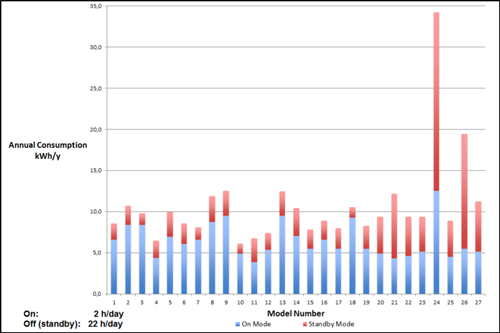
Source: IEA 4E Report: Smart Lighting – New Features Impacting Energy Consumption (Fig. 14)
Additional energy is consumed by wireless gateways, usually necessary for the lamp’s communication with a home local network.
The report also provides an overview of the most common wireless communication protocols used in smart lighting products, including Wi-Fi, Li-Fi, Bluetooth, Zigbee, Z-wave, and 6LoWPAN. Issues with interoperability between different manufacturer’s lighting products could hamper large scale growth of smart lighting products, according to the report.
The SSL Annex was established in 2010 as part of the IEA’s Energy Efficient End-use Equipment (4E) Implementing Agreement to provide information on implementing quality programs for LED lighting. For further information on the 4E SSL Annex, click here.
7Roughly equivalent to the light output of 25W to 75W incandescent light bulbs
European Ecodesign Directive Activity Continues
The following table updates the status for current Ecodesign product groups. Copies of the Implementing Measures (standards) and Working Drafts can be downloaded here. Changes from the previous Efficiency Watch are in red.
Table 12. Ecodesign Directive product lot status (as of October 14, 2016)
| Product Lot | Status in the ErP Process |
|---|---|
| Boilers and combi-boilers, TREN Lot 1 (Heaters) | Entry into force August 22, 2013 |
| Water heaters, TREN Lot 2 | Entry into force August 22, 2013 Review study started in 2016. Expected early 2017. |
| Personal Computers & monitors, TREN Lot 3 | Entry into force July 27, 2013. Guidelines published April 2014. Monitor review in progress. |
| Imaging equipment, TREN Lot 4 | Voluntary Agreement recognized by EC. Revision under review. VA steering committee meeting June 2016. |
| Televisions, TREN Lot 5 | Entry into force August 12 2009 (Amended in September 2013 in Lot 6 regarding TV networked standby). Review in progress |
| Standby and off-mode losses, TREN Lot 6 | Entry into force January 7 2009 (Amended in September 2013 for networked standby and coffee makers EU 801/2013) Review currently in progress; interim report due early 2016 |
| Battery chargers & EPS, TREN Lot 7 | Entry into force April 27 2009 Updated EPS Working Document proposal published April 2015. Regulatory Committee vote expected by early 2016. |
| Tertiary Lighting, TREN Lot 8–9 | Entry into force April 13 2009 (amended April 2010). Product study finalized 2015. |
| Room air conditioning appliances, TREN Lot 10 | Entry into force March 26, 2012 |
| Residential Ventilation and Kitchen Hoods TREN Lot 10 | Entry into force December 15, 2014 |
| Electric motors 1–150 kW, TREN Lot 11 | Entry into force August 12 2009 Amendment published Jan 2014 |
| Ventilation fans, TREN Lot 11 | Entry into force April 27, 2011 (New ≤125 W WD proposed) Under review - Consultation Forum – April 2015 |
| Circulators in buildings, TREN Lot 11 | Entry into force August 12 2009. Amended in 2012. |
| Water pumps , TREN Lot 11 | Entry into force July 16, 2012. Revision ongoing. |
| Commercial refrigerators and freezers, TREN Lot 12 | Entry into force July 2015 |
| Domestic refrigerators and freezers, TREN Lot 13 | Entry into force August 12 2009 Final review study published March 2016 |
| Domestic washing machines, TREN Lot 14 | Entry into force December 2010 2nd stakeholder meeting focusing on Working Document held Nov 2015 |
| Domestic dishwashers, TREN Lot 14 | Entry into force December 2010 2nd review stakeholder meeting held Nov 2015 |
| Solid fuel small combustion installations, ENER Lot 15 | Entry into force August 2015 |
| Laundry driers, TREN Lot 16 | Entry into force November 1, 2012 2nd stakeholder meeting focusing on Working Document for washer-driers held Nov 2015 |
| Vacuum cleaners, TREN Lot 17 | Entry into Force August 2, 2013 |
| Complex set-top boxes, TREN Lot 18 | VA Endorsed by EC. Second inspector Compliance report published in May 2013. Revision discussed. |
| Simple set-top boxes, TREN Lot 18a | Entry into force February 25 2009 |
| Domestic lighting (general lighting equip.), TREN Lot 19 | Entry into force April 13 2009 Amended Sept 1 2009 Draft revisions sent to Regulatory Commission April 2015. Lighting product study completed Dec 2015. |
| Domestic lighting (directional & LED) Lot 19 part 2 | Entry into force January 3, 2013 Draft revisions sent to Regulatory Commission April 2015. Lighting product study completed Dec 2015. |
| Local room heating products, ENER Lot 20 | Entry into force August 2015 |
| Central heating products, ENER Lot 21 | Sent to WTO Sept 2015 |
| Domestic and commercial ovens, ENER Lot 22 | Entry into force February 20, 2014 |
| Domestic and commercial hobs and grills, ENER Lot 23 | Entry into force February 20, 2014 |
| Professional wet appliances and dryers, ENER Lot 24 | Consultation Forum held May 2014 |
| Non-tertiary coffee machines, ENER Lot 25 | Now covered in Lot 6 Standby Power IM through September 2013 amendment (EU 801/2013) |
| Networked standby losses, ENER Lot 26 | Now covered in Lot 6 Standby Power IM through September 2013 amendment (EU 801/2013). Currently under revision. |
| Domestic UPSs, ENER Lot 27 | Study completed |
| Pumps for waste waters, ENER Lot 28 | Consultation Forum held May 2014 |
| Large pumps - pools, fountains, aquariums ENER Lot 29 | Study on-going |
| Special motors and drivers, ENER Lot 30 | Consultation Forum held September 2014 |
| Compressors, ENER Lot 31 | Launched new study on low pressure and oil free applications. Tasks 1-4 is now available. Stakeholder meeting held May 2016 |
| Window products, ENER Lot 32 | Consultation Forum held Sept 2015 |
| Smart Appliances, ENER Lot 33 | Tasks 5 – 6 available for review. Final stakeholder meeting May 2016. |
| Lighting Systems, ENER Lot 37 | Preparatory Study Tasks 0 – 4 available May 2016 |
| Refrigerating and freezing equipment, ENTR Lot 1 | Draft Regulations sent to WTO Jan 2014 |
| Distribution and power transformers ENTR Lot 2 | Entry into force June 2014. Preparatory study for revision of regulation launched September 2016 |
| Sound and imaging equipment, ENTR Lot 3 | Gaming console self-regulatory initiative recognized by EC - April 2015. Steering Committee meeting held June 2016 |
| Industrial ovens, ENTR Lot 4 | Consultation Forum May 2014 |
| Machine tools ENTR Lot 5 | VA Working Document distributed |
| Tertiary Air Conditioning, ENTR Lot 6 | Entry into Force December 15, 2014 |
| Steam Boilers, ENTR Lot 7 | Study completed |
| Power Cables, ENTR Lot 8 | Study completed |
| Enterprise Servers, ENTR Lot 9 | Study completed |
| Medical imaging equipment, ENTR 0X | Annual self-regulatory initiative status report published |
Late Breaking News
 The next International Conference on Energy Efficiency in Domestic Appliances and Lighting (EEDAL) will take place at the CalPlug Center at the University of California in Irvine. EEDAL’17 will run for three days starting on September 9th, 2017. The conference covers the latest developments in energy efficiency affecting residential appliances and lighting, heating and cooling equipment, ICT equipment, smart meters, and smart grids. Presentations will also discuss consumer behavior and policies and programs (current and planned). Plenary sessions allow key representatives of governments and international organizations, manufacturers and academia to present their views and programs to advance energy efficiency in residential appliances and lighting. For more information, click here. Papers from EEDAL 2015 can be downloaded here.
The next International Conference on Energy Efficiency in Domestic Appliances and Lighting (EEDAL) will take place at the CalPlug Center at the University of California in Irvine. EEDAL’17 will run for three days starting on September 9th, 2017. The conference covers the latest developments in energy efficiency affecting residential appliances and lighting, heating and cooling equipment, ICT equipment, smart meters, and smart grids. Presentations will also discuss consumer behavior and policies and programs (current and planned). Plenary sessions allow key representatives of governments and international organizations, manufacturers and academia to present their views and programs to advance energy efficiency in residential appliances and lighting. For more information, click here. Papers from EEDAL 2015 can be downloaded here.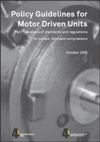 A new report describing minimum energy performance standards (MEPS) for motor driven units (MDUs) has been published by the IEA’s 4E Electric Motor Systems Annex (EMSA). This is the first report from a major study being conducted by EMSA on options for increasing the international alignment of MDU standards and energy efficiency regulations. The report, Policy Guidelines for Motor Driven Units, focuses on pumps, fans, and compressors, covering existing standards and regulations that affect them. The next report will contain an action plan on how to regulate components and MDUs in order to develop policies for existing and new installations.
A new report describing minimum energy performance standards (MEPS) for motor driven units (MDUs) has been published by the IEA’s 4E Electric Motor Systems Annex (EMSA). This is the first report from a major study being conducted by EMSA on options for increasing the international alignment of MDU standards and energy efficiency regulations. The report, Policy Guidelines for Motor Driven Units, focuses on pumps, fans, and compressors, covering existing standards and regulations that affect them. The next report will contain an action plan on how to regulate components and MDUs in order to develop policies for existing and new installations. The U.S. DOE has issued a final rule establishing the first-ever efficiency standards for wine chillers. The new standards will reduce wine chiller energy use by 75% compared to the market’s least efficient products. The final rule implements an agreement that was negotiated by manufacturers and efficiency advocates, including the Association of Home Appliance Manufacturers (AHAM), GE, Haier, Whirlpool, the Appliance Standards Awareness Project (ASAP), and the California Investor-Owned Utilities. According to the DOE, the new standards will reduce electricity consumption by about 160 billion kilowatt-hours over 30 years of sales, saving consumers over $5 billion in energy costs. The new standards take effect at the end of 2019.
The U.S. DOE has issued a final rule establishing the first-ever efficiency standards for wine chillers. The new standards will reduce wine chiller energy use by 75% compared to the market’s least efficient products. The final rule implements an agreement that was negotiated by manufacturers and efficiency advocates, including the Association of Home Appliance Manufacturers (AHAM), GE, Haier, Whirlpool, the Appliance Standards Awareness Project (ASAP), and the California Investor-Owned Utilities. According to the DOE, the new standards will reduce electricity consumption by about 160 billion kilowatt-hours over 30 years of sales, saving consumers over $5 billion in energy costs. The new standards take effect at the end of 2019.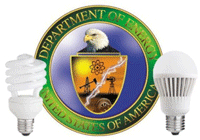 The U.S. DOE has issued a final rule pertaining to general service lamp test procedures. The changes in the final rule will be mandatory for product testing starting 180 days after its publication in the U.S. Federal Register. For more information, including milestones, rulemaking documents, waivers, and other information, click here.
The U.S. DOE has issued a final rule pertaining to general service lamp test procedures. The changes in the final rule will be mandatory for product testing starting 180 days after its publication in the U.S. Federal Register. For more information, including milestones, rulemaking documents, waivers, and other information, click here.






